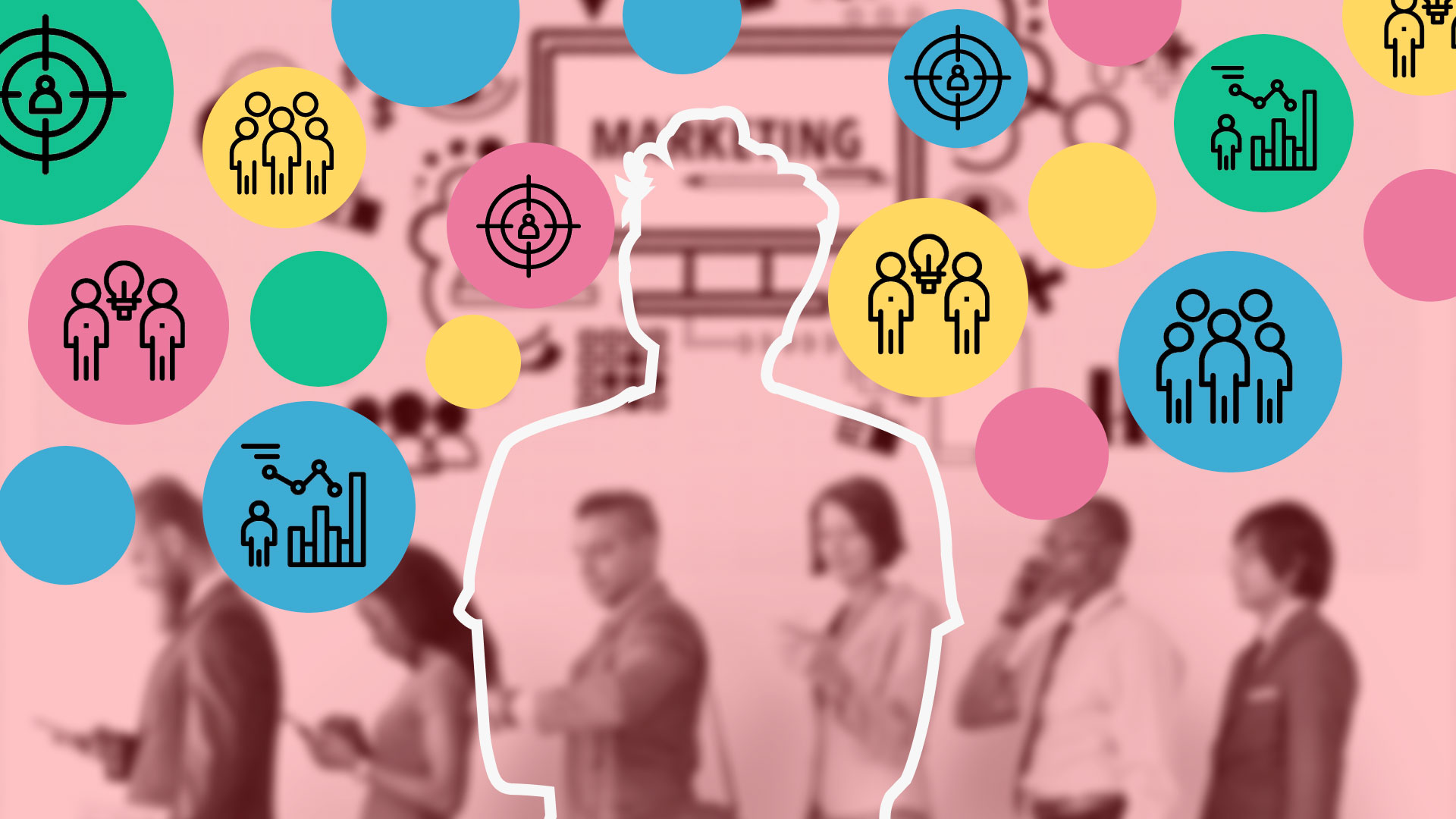How to create compelling marketing personas
We live in an era of personalization — understanding your target audience is crucial for driving effective marketing strategies and achieving business success.
Consumerswant online experiences that are tailored to them, whether that’s on social media, streaming services, or shopping online.
According to McKinsey, 71% of consumers expect personalized online experiences and 76% are upset when they don’t receive them.
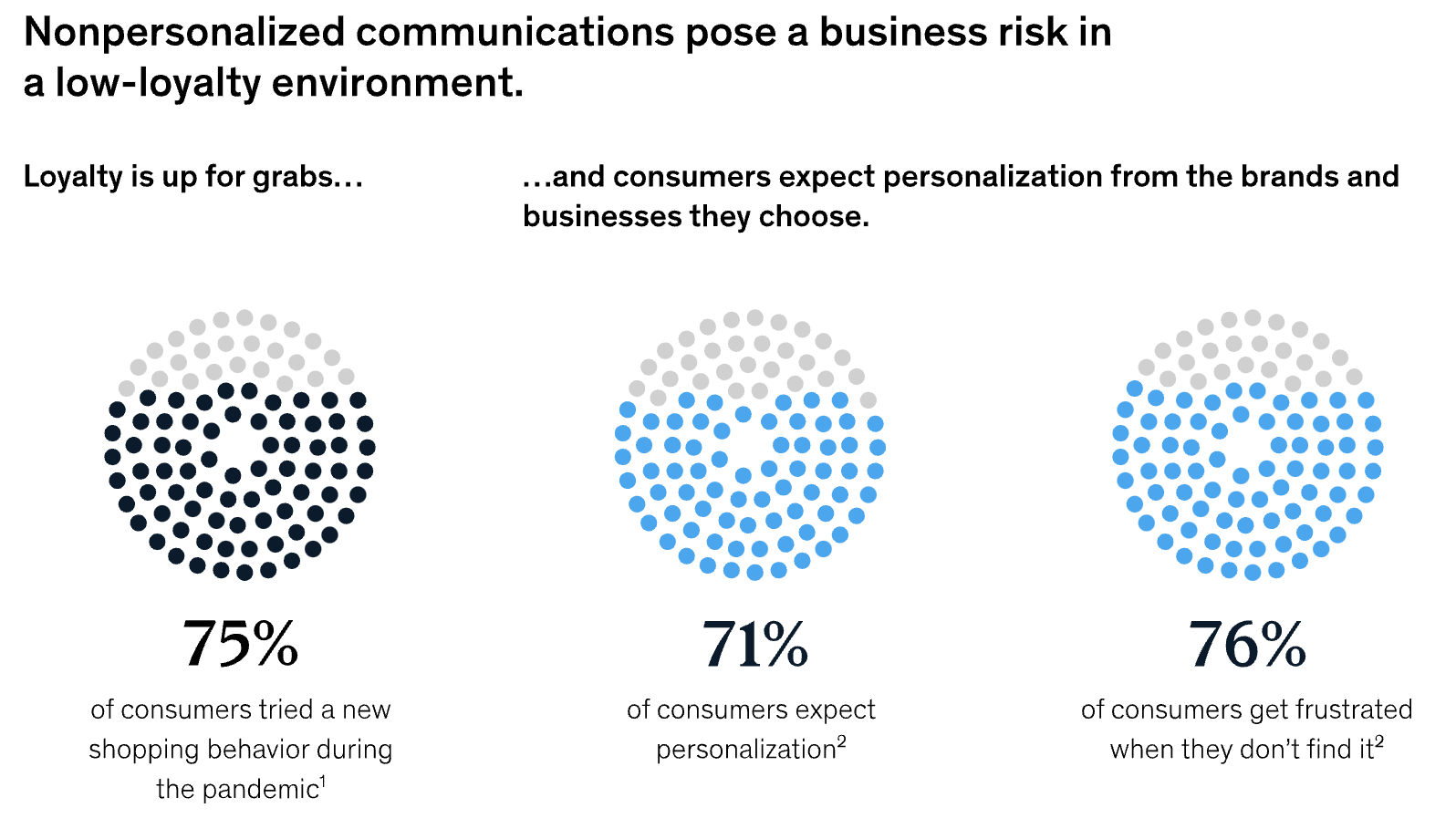
Enter marketing personas — a powerful tool that helps you humanize your audience and gain deep insights into their needs, preferences, and motivations.
Personas are fictional, data-based representations of your target audience that help connect your brand to consumers on a more personal level by increasing the relevance of your brand. You can apply compelling marketing personas to create tailored ad campaigns, create a more engaging landing page, and build stronger connections with your social audience.
It’s a versatile tool, but what marketing personas really do is help brands identify and reach their core target market more efficiently, in some cases even decreasing marketing and sales costs by 20%.
In this blog post, we will guide you through the process of creating marketing personas that truly resonate, providing you with actionable steps to unlock the potential of these invaluable tools.
What is a marketing persona?
A marketing persona, also known as a buyer persona or customer persona, is a fictional representation of your ideal customer. It is a detailed profile that describes the characteristics, demographics, behaviors, goals, motivations, and challenges of a specific segment of your target audience.
There are plenty of variations in the formatting of a persona, but typically they look something like this example from Michael Brito.
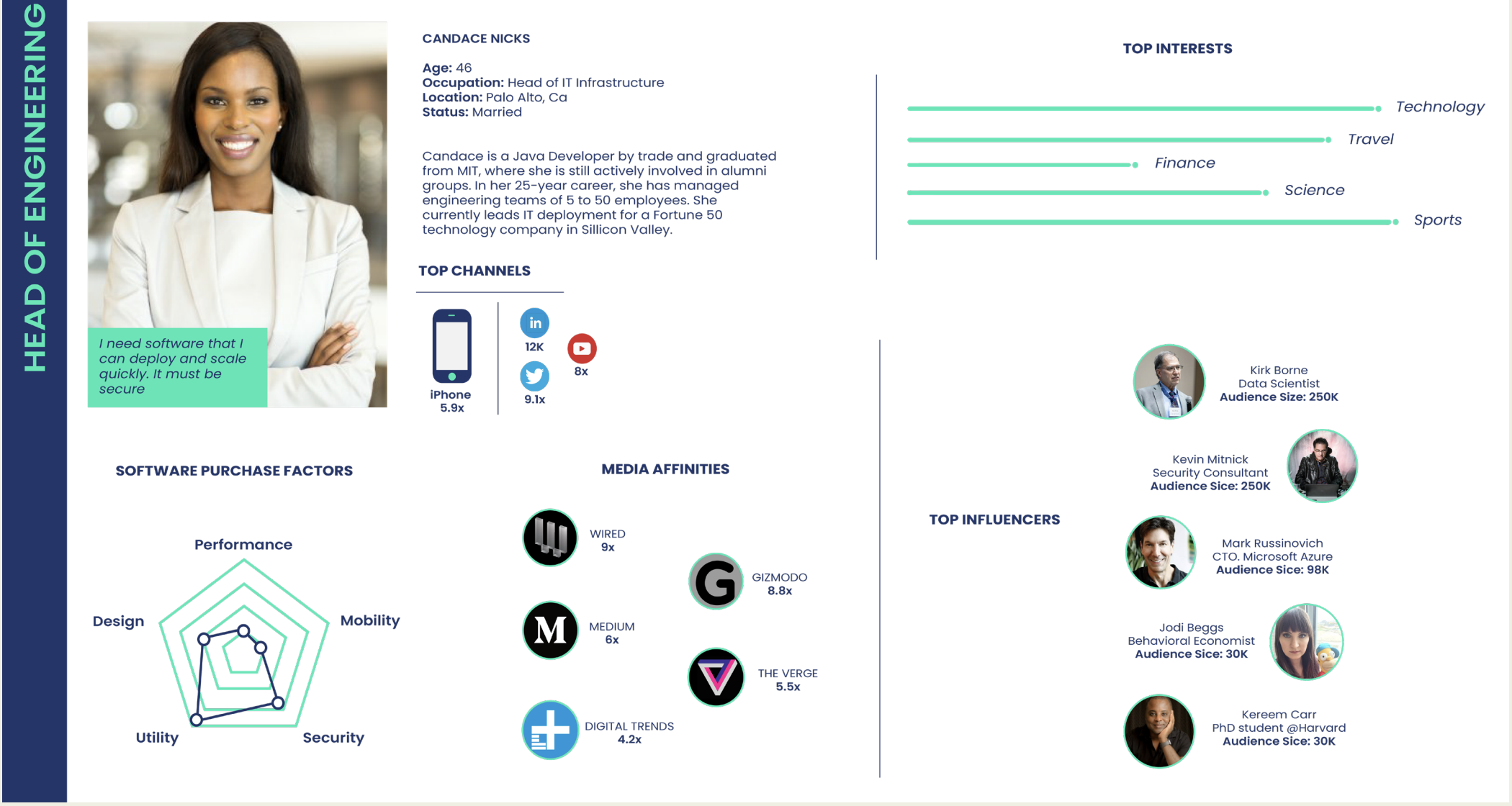
These personas are built on a mountain of information accumulated through research and analysis of customer data — surveys, interviews, market research, social listening, and audience analysis.
They are used to humanize and better understand your target audience, allowing you to tailor your marketing strategies and messages to effectively reach and engage with them.
Typically, a marketing persona includes demographic and socioeconomic information such as age, gender, occupation, income level, education, and location. It may also include personal details, such as family status, hobbies, interests, and values.
As consumers become more discerning in their chosen business, good marketing personas need more than just demographic data.
Characteristics of a good marketing persona
If you want your marketing efforts to succeed, creating a good marketing persona is critical. But what exactly are the characteristics of a good marketing persona?
A good persona is not only based on demographic information, but it also includes psychographic and technographic data as well as information on media affinities and buying mindset:
- Demographic characteristics such as age, gender, and location help marketers understand the basic profile of their target audience, enabling them to tailor their messaging and offerings accordingly
- Technographic characteristics such as devices used, online behavior, and technological preferences provide insights into how customers interact with digital platforms, informing marketers about the best channels and strategies to reach and engage with them
- Psychographic characteristics such as personality traits, values, interests, and lifestyle choices provide a deeper understanding of customers' motivations and preferences. This data is critical for helping marketers create more personalized and relevant marketing campaigns
- Media affinity indicates the platforms, channels, and content types preferred by the target audience, allowing marketers to allocate resources effectively and deliver messages through the most appropriate channels
- Buying mindset refers to the buying patterns, preferences, and decision-making criteria of your target audience. This information enables marketers to anticipate customer needs and preferences, optimize product offerings, and develop effective sales strategies
By gathering a full spectrum of information on key consumer segments, marketers have a solid foundation on which they can create personas that resonate deeply with your audience, helping to build trust and credibility.
Of course, a good persona should distill this information into a clear, granular picture of your ideal customer. Don’t forget to validate your marketing persona with real-world data to ensure its accuracy.
Why are marketing personas important?
By developing detailed marketing personas, you can tailor your marketing messages to address the unique challenges and pain points of each group, ultimately increasing your chances of converting them into paying customers.
To understand why these personas are so critical to the success of your campaigns and profitability of your brand, you need to realize how important personalization is to consumers.
In particular, first time consumers. Here are some of survey results from that same McKinsey report regarding consumer expectations for more personalized brand experiences.
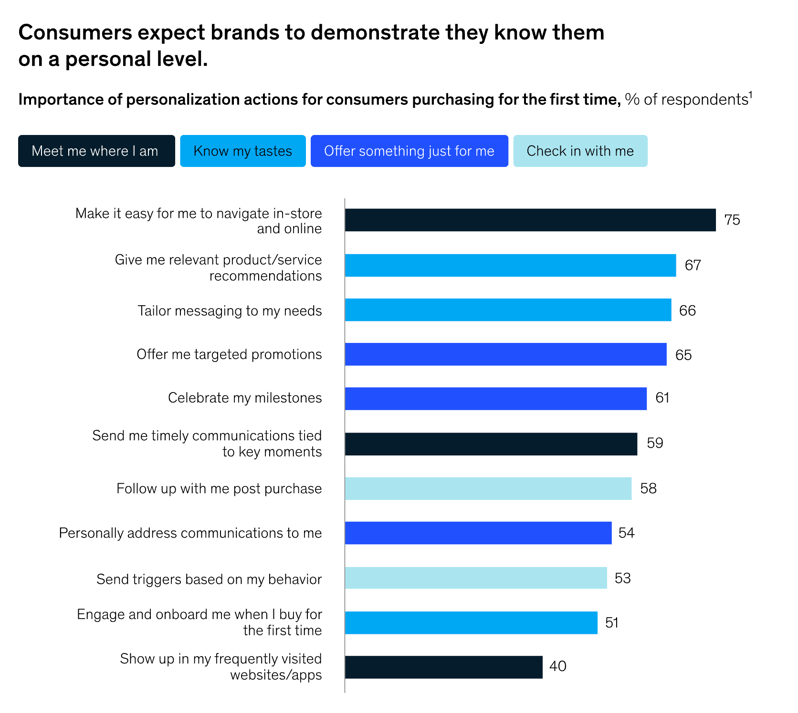
These are all tasks that you can elevate with compelling, data-based marketing personas:
- Relevant product and service recommendations,
- Needs-specific messaging,
- Targeted and timely communication,
- Promotional pricing and product recommendations.
Without an in-depth understanding of your ideal customer, you risk wasting time, resources, and money on ineffective advertising campaigns that fail to connect with your audience. Taking the time to thoroughly investigate your different consumer segments so you can create accurate and comprehensive marketing personas should be a top priority for any business looking to grow and succeed in today's competitive marketplace.
Now let’s take a look at some of the specific benefits of creating data-driven marketing personas.
Benefits of using marketing personas
As you can see, marketing personas have game-changing potential for any business. By creating detailed profiles of your ideal customer segments, you gain valuable insights into their behavior, preferences, and needs.
Here are six key ways you can turn social listening data and audience insights into personas that improve the effectiveness of your marketing, sales, and customer service efforts:
- Customer understanding: Marketing personas provide a deep understanding of your target audience, helping you gain insights into their needs, preferences, and motivations. This understanding enables you to create more relevant and targeted marketing strategies, messages, and content.
- Effective communication: Personas help you tailor your communication and messaging to resonate with your ideal customers. By speaking directly to their interests, challenges, and aspirations, you can increase engagement and build stronger connections with your audience.
- Enhanced product development: Personas provide valuable insights into customer preferences and pain points, allowing you to develop products and services that align with their needs. This customer-centric approach increases the likelihood of creating offerings that resonate with your target market and leads to higher customer satisfaction.
- Targeted marketing campaigns: With personas, you can segment your audience more effectively and create targeted marketing campaigns. By delivering the right message to the right people through the most appropriate channels, you can improve the efficiency and effectiveness of your marketing efforts, leading to higher conversion rates.
- Improved customer experience: By understanding your customers' behaviors and preferences, you can optimize their experience with your brand. Whether it's through personalized content, tailored recommendations, or seamless interactions, personas help you deliver a more relevant and engaging customer experience.
- Data-driven decision making: Marketing personas provide a framework for making data-driven decisions. By analyzing customer data and insights associated with each persona, you can make informed choices about marketing strategies, product development, pricing, and customer service, leading to better business outcomes.
Example of an effective marketing persona
To give you a look at how effective marketing personas can be, let’s reverse engineer one based on what we know about all-in-one nutritional supplement brand Athletic Greens.
This health brand has exploded in popularity over the past decade, in no small part because of its crystal clear understanding of its ideal customer.
Here’s an example of a marketing persona that Athletic Greens might use to clarify its target consumer segment.
|
Athletic Greens marketing persona: Active Andy |
|
|
Active Andy represents the target audience for Athletic Greens, a comprehensive all-in-one nutritional supplement designed to provide essential vitamins, minerals, and nutrients for active individuals. Andy is health-conscious, physically active, and constantly seeking ways to optimize his performance and overall well-being. |
|
|
Demographics |
|
|
Psychographics |
|
|
Media Consumption/ Technographics |
|
|
Buying Habits |
|
|
Goals |
|
|
Pain Points |
|
Steps to creating a marketing persona
Creating a marketing persona is a crucial step towards understanding your customers' needs and preferences. To do this successfully, there are a few key steps you should take:
- Conduct research: Gather data and insights about your target audience through various research methods. This can include analyzing customer data, conducting surveys, interviews, and focus groups, studying market research reports, and combining social listening with audience intelligence.
- Identify commonalities: Look for patterns, common characteristics, and behaviors among your target audience. Identify the key demographic, psychographic, and technographic traits that define your ideal customers.
- Define persona attributes: Based on your research findings, create a detailed profile for each persona. This includes demographic information (age, gender, location), psychographic information (interests, values, motivations), technographic information (technology usage, online behavior), and any other relevant attributes that define the persona.
- Name and visualize: Name each persona and find representative visuals (e.g., stock photos) to create a more humanized and relatable representation. This helps to personify the persona and make it easier to relate to during marketing discussions and planning.
- Develop narrative: Write a narrative or story that describes the persona in more depth. Include details about their background, goals, challenges, and aspirations. This helps bring the persona to life, makes it more relatable to consumers, and allows marketers to better understand their needs and motivations.
- Validate and refine: Share the persona profiles with relevant stakeholders, such as sales teams, customer service representatives, and product developers. Gather feedback and validate the accuracy and relevance of the personas. Make necessary adjustments and refinements based on the insights and feedback received.
- Apply to marketing strategy: Incorporate the personas into your marketing strategy and campaigns. Use them to guide content creation, messaging, channel selection, and targeting. Consider how each persona would interact with your brand at different touchpoints and tailor the customer experience accordingly.
- Continuously update and evolve: Keep your personas up to date by regularly collecting new data and insights. Consumer behaviors and preferences can change over time, so it's important to periodically revisit and refine your personas to ensure they accurately reflect your target audience.
It’s important to remember that the exact process your company uses within each of these steps will vary depending on a variety of factors, including industry, size, regionality, target audience, and strategy. That’s why the eighth step is key — you need to constantly review and revise your persona’s to ensure they are accurate and actionable.
Tips for gathering information for your marketing persona
Whether you're a seasoned marketer or new to the field, creating a marketing persona can be a daunting task. However, with the right approach, it can be a highly effective way to connect with your target audience.
Here are a few tips you can use during the initial research stage of persona development:
1) Cast a wide net
Gather as much information on your audience as you possibly can using customer surveys and interviews and even offering incentives for customer participation. Getting a large, diverse sample of responses will ensure that your insights are valid when it comes time to analyze the data.
Surveys and interviews are great because they let you gather a vast amount of quantitative and qualitative data on your target audience regarding things like demographics, interests, behaviors, challenges, and preferences. They can also be sent to your current customers or administered online through various channels to increase reach.
2) Use first-party data
In addition to the insights you gain from customers and leads through interviews and surveys, you likely have another backlog of information available for analysis like firsthand interactions between your sales and customer service personnel and the customer.
These direct encounters are often full of valuable anecdotes, feedback, and observations that contribute to persona development, and the best part — they are likely already stored in your CRM!
3) Use social media platforms and online communities
Social media channels may seem like the low-hanging fruit for persona research, but all platforms are not created equal. While places like Instagram and LinkedIn may yield more superficial results, you can still use platforms like Reddit that provide a more in-depth forum for debate and impassioned discussion.
4) Deploy a holistic approach
The key is to gather data from multiple sources and triangulate the information to create a holistic view of your target audience. Continuously update and refine your personas as you gather more data and insights over time
Tools and resources for marketing personas
With the right combination of tools and resources, you'll be able to develop dynamic personas that truly resonate with your audience. While you can use social media channels and social listening tools to kickstart the process, the information that’s mission-critical to your personas (and the rest of your marketing campaigns) can only be found with Audience intelligence tools.
Audience intelligence takes you past surface level discussions to the underlying behaviors and affinities that truly drive customer behavior. These tools are particularly useful when used alongside social listening tech.
For example, Audiense Insights compliantly leverages the massive lake of user data on Twitter to identify the brands, messaging, influencers, and topics that your audience resonates with on the social marketplace. Plus, thanks to a recent acquisition by Audience, you can gain the same level of intelligence from Meta users.
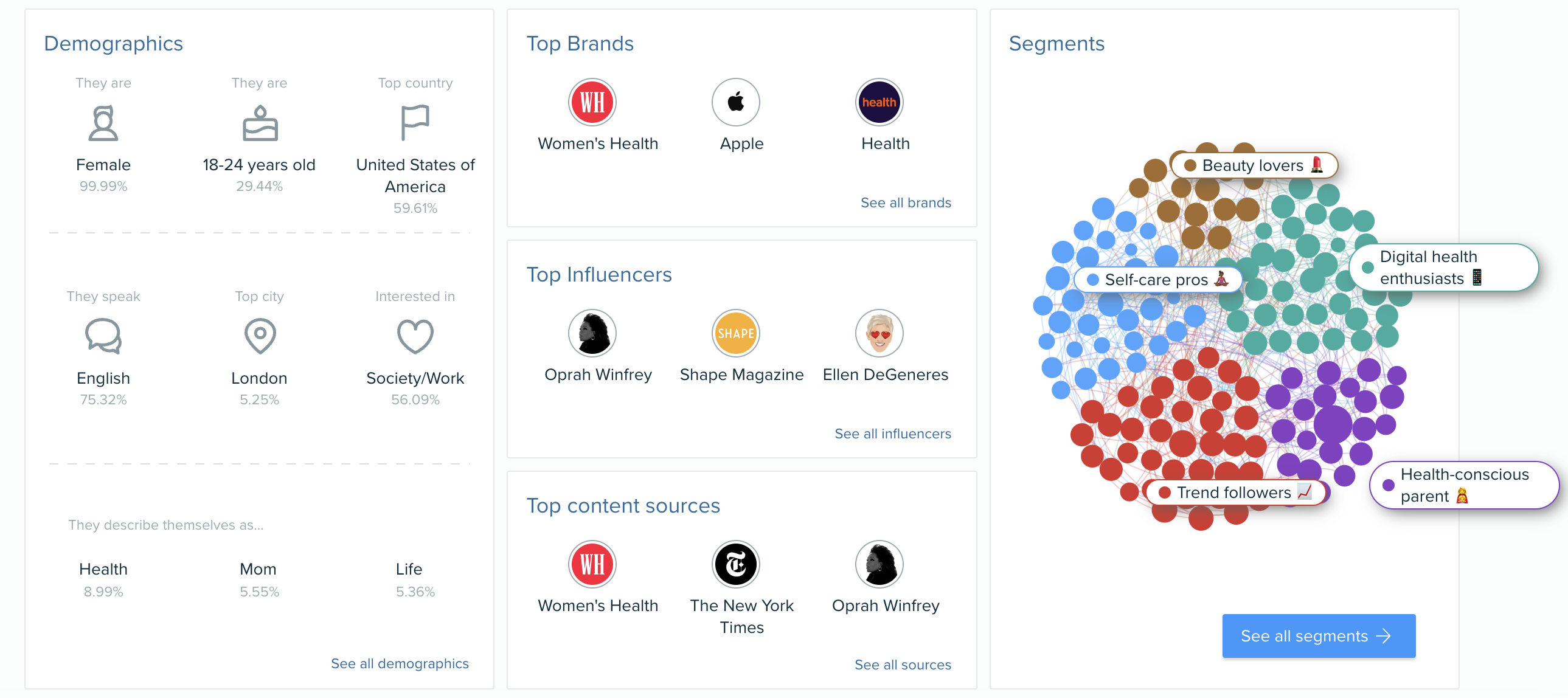
Using marketing personas in your marketing strategy
Marketing personas often gain a lot of attention during the initial stages of strategy development, but they are useful across all channels and stages of your marketing strategy. Think of personas as a sifter that you need to use to refine your content and identify the truly golden marketing opportunities.
Using your personas throughout the entirety of your marketing efforts not only helps to create a stronger connection with your audience but can help improve ROI (remember that 10-20% decrease in sales and marketing spend).
How to use marketing personas in your marketing efforts
While persona’s can be used to inform virtually any piece of marketing, sales, or customer support content, let’s take a look at some ways marketing teams can apply them to improve effectiveness of different campaigns.
Social media marketing:
- Targeted content: Use personas to understand the interests, preferences, and behaviors of your audience on social media. Tailor your content to align with their needs and engage them effectively.
- Platform selection: Different personas may prefer specific social media platforms. Use personas to identify the platforms where your target audience is most active, and focus your efforts there for better reach and engagement.
Email marketing:
- Personalized messaging: Leverage personas to create personalized and relevant email content. Segment your email list based on personas and craft targeted messages that speak directly to their interests and pain points.
- Email campaign optimization: Analyze persona attributes such as preferred communication styles and content formats to optimize email campaigns. Adjust email design, subject lines, and call-to-action language based on each persona's preferences.
Influencer marketing:
- Influencer selection: Use personas to identify the influencers who align with your target audience's interests and values. Collaborate with influencers whose audience closely matches your personas to maximize the impact of influencer marketing campaigns.
- Content collaboration: Share persona insights with influencers to help them create content that resonates with your target audience. Align influencer content with the preferences and aspirations of your personas for better engagement and authenticity.
Content marketing:
- Content strategy: Develop a content strategy that addresses the pain points, challenges, and interests of each persona. Create content that educates, inspires, or entertains your target audience based on their specific needs and preferences. Essentially, create truly customer-centric content.
- Content personalization: Use personas to personalize content delivery. Tailor blog posts, articles, videos, and other content formats to cater to the unique characteristics, personalities, and goals of each persona, providing a more personalized user experience.
Paid ads:
- Ad targeting: Utilize persona attributes such as demographics, interests, and behaviors to refine your ad targeting. By aligning your ads with the preferences and characteristics of your personas, you can improve click-through rates and conversions.
- Ad messaging: Craft ad copy and creative elements that speak directly to the pain points and aspirations of your personas. Tailor your ads to resonate with the specific needs and motivations of each persona, increasing their relevance and effectiveness.
By leveraging marketing personas in these marketing efforts, businesses can better understand their target audience, deliver more relevant content, and improve overall campaign performance.
Key takeaways
There’s a reason why over 70% of surveyed marketers will, or are planning to, use personas over the next 12 months — they work.
While the description of a persona seems simple, a fictional representation of your ideal customer, they are the bedrock of a successful marketing campaign. What gives marketing personas the ability to improve marketing efficiency is the amount of research and analysis that goes into them.
In this post, we took a deep dive into the world of marketing personas, looking at the following topics:
- The characteristics of a good marketing persona
- Why marketing personas are so important for your business
- An example of a marketing persona for a large CPG brand
- The steps of creating a marketing persona
- How personas can improve other aspects of your marketing strategy
One of the most underappreciated aspects of developing a quality marketing persona is arming yourself with the right tools. Survey, social media channels, and social listening tools are a great start, but you need an audience intelligence tool to really dig deep on your target consumer segment.
Learn how you can use Audience Insights to increase the efficacy and accuracy of your marketing personas and drive ROI.




